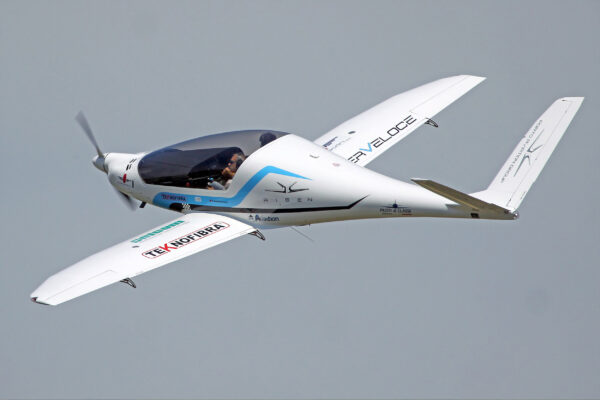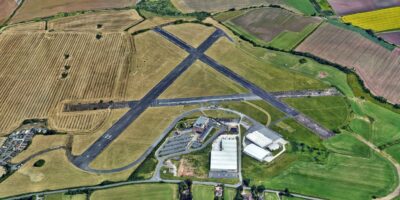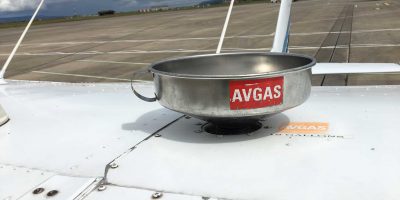Lake Michigan was as calm and reflective as a meditating monk on this tranquil summer morning. My assignment was to ferry a PA-18 Super Cub on amphibious floats from Wisconsin to Maryland, a task made even more interesting and enjoyable by the presence of my first seaplane student. AOPA colleague Janet Davidson was joining me on this trip. She’s a skilled and seasoned aviator and, somewhat miraculously, her former career as an airline pilot hasn’t diminished her enthusiasm for flying – especially unstructured, low and slow trips like this one. Our 600nm journey would take us across Lake Michigan, a corner of Lake Erie and the Appalachian Mountains.
I’d been a CFII (Certified Flight Instructor-Instrument) for years and, relatively recently, got a seaplane rating. That new certificate is the only thing required for Certified Flight Instructors to teach other pilots to fly on and off the water – and I had all the fervour of a new convert. We took off from Wittman Regional Airport (KOSH), retracted all four wheels and headed east to nearby Lake Winnebago.
Conditions were so sublime that I couldn’t resist talking Janet through a few water landings on the placid lake. We touched down next to ‘Warbird Island’, the final aerial checkpoint for warbird and turbine aircraft pilots inbound for the EAA’s annual pilgrimage. On this serene morning, pelicans were the only fliers there, and most of them had waddled ashore. We taxied close to the island and hundreds of pelicans were roosting there as well as other water birds. There was no indication that the placid island is the scene of so much aerial excitement during one magical week each year.
“We’re going to be so far out of gliding distance from the shoreline anyway, it’s really not going to matter”
Next, we continued east to Lake Michigan where the mirror-smooth surface was more like a gelatinous skin than the world’s fifth largest lake.
A direct GPS course to our destination would take us directly across the massive lake, an expanse of about 60nm. I was reluctant to make the crossing because a rough sea state can make it unlandable, even for seaplanes. Waves of about two feet are all the Super Cub’s amphibious floats can handle, and the choppy swells on Lake Michigan are normally higher than that. Better to set a cautious example for my student and take a scenic detour south next to the majestic Chicago skyline.
We turned south along the western edge of the lake and droned along for a time, but the draw of a mid-lake crossing was too strong to ignore. We had a long day of flying in front of us, and we wanted to make as much progress on this idyllic morning as possible. We were both wearing inflatable life vests, and I had a satellite messenger and a personal locator beacon in my vest pocket. If the 160hp Lycoming engine gave out over the water, our odds of making it back to shore still seemed excellent.
I asked Janet to turn straight east and fly directly to the Michigan dunes on the opposite shore.
“How high would you like to fly?” she asked in her distinctive Scottish brogue. Even though, from my vantage point in the Cub’s back seat, I could see only the back of Janet’s head, I could sense mischief in her voice.
“As low as you want,” I replied. “We’re going to be so far out
of gliding distance from the shoreline anyway, it’s really not going to matter.”
She descended to the point that the Super Cub’s humble 85kt speed actually felt fast over the water.
The lake surface was largely barren until the middle of the lake where a pair of freighters churned south towards Chicago. I was tempted to ask Janet to land at the geographic centre of the lake, just for the pure novelty of it. But I resisted the urge to suggest it.
At the centre of the lake, about 30 miles from the Michigan coast, the water’s surface became slightly rippled, then wavy.
Within a few minutes wave heights reached two feet, and then more. A stiff wind was blowing from the south-west, and before long there were whitecaps in all directions. I was astonished at how rapidly and dramatically conditions had changed.
A fishing boat trolling for salmon bobbed on the water nearby. I guessed the boat was about 25 feet long.
“That’s a pretty small boat to be all the way out here,” Janet said.
The fishermen in it must have regarded our Super Cub in exactly the same way. That’s a pretty small aircraft to be all the way out here.
A few long minutes later, the Michigan shoreline came into view, and then I was relieved to be over land again. The entire crossing had taken just 45 minutes, and conditions had been ideal for half of that time. But the last 20 minutes were long enough to make me realise the scenic route would have been the wiser one. Next time, Chicago will be my kind of town.
RV-4 pilot, ATP/CFII, specialising in tailwheel and aerobatic instruction
[email protected]







